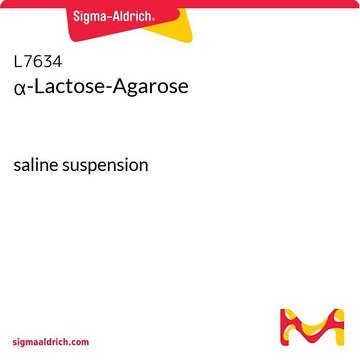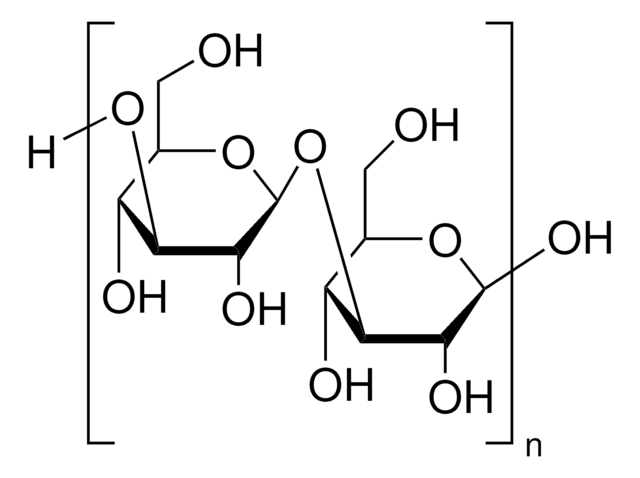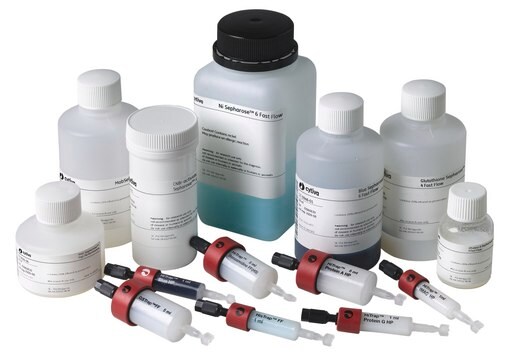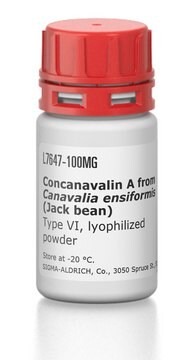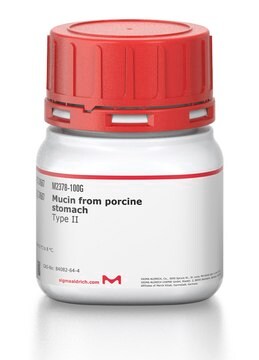M9917
Mannan−Agarose
saline suspension
Synonym(e):
Mannan Binding Protein Agarose
About This Item
Empfohlene Produkte
Biologische Quelle
plant
Qualitätsniveau
Form
saline suspension
Methode(n)
affinity chromatography: suitable
Matrix
cross-linked 4% beaded agarose
Matrixaktivierung
cyanogen bromide
Matrixanbindung
hydroxyl
Matrix-Spacer
1 atom
Kapazität
≥30 mg/mL binding capacity (concanavalin A)
Eignung
suitable for chromatography
Lagertemp.
2-8°C
Anwendung
Physikalische Form
Lagerklassenschlüssel
10 - Combustible liquids
WGK
WGK 3
Flammpunkt (°F)
Not applicable
Flammpunkt (°C)
Not applicable
Zulassungslistungen
Zulassungslistungen werden hauptsächlich für chemische Produkte erstellt. Für nicht-chemische Produkte können hier nur begrenzte Angaben gemacht werden. Kein Eintrag bedeutet, dass keine der Komponenten gelistet ist. Es liegt in der Verantwortung des Benutzers, die sichere und legale Verwendung des Produkts zu gewährleisten.
EU REACH Annex XVII (Restriction List)
Analysenzertifikate (COA)
Suchen Sie nach Analysenzertifikate (COA), indem Sie die Lot-/Chargennummer des Produkts eingeben. Lot- und Chargennummern sind auf dem Produktetikett hinter den Wörtern ‘Lot’ oder ‘Batch’ (Lot oder Charge) zu finden.
Besitzen Sie dieses Produkt bereits?
In der Dokumentenbibliothek finden Sie die Dokumentation zu den Produkten, die Sie kürzlich erworben haben.
Kunden haben sich ebenfalls angesehen
(Chanos chanos F.) Serum
Unser Team von Wissenschaftlern verfügt über Erfahrung in allen Forschungsbereichen einschließlich Life Science, Materialwissenschaften, chemischer Synthese, Chromatographie, Analytik und vielen mehr..
Setzen Sie sich mit dem technischen Dienst in Verbindung.



